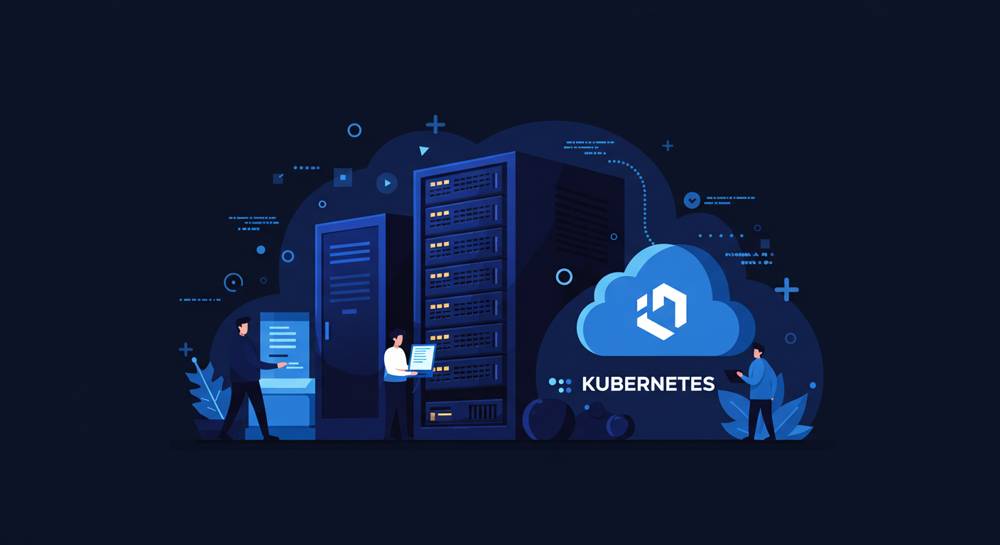In this article, you can get training on Kubernetes, one of the most powerful platforms for container orchestration. As organizations increasingly adopt microservices architectures, understanding the ins and outs of Kubernetes has become crucial for developers and operations teams alike. This tutorial is designed for intermediate and professional developers looking to deepen their knowledge of Kubernetes, enhancing their ability to build, deploy, and manage applications at scale.
Overview of Tutorial
Kubernetes is an open-source platform designed to automate the deployment, scaling, and management of containerized applications. Originally developed by Google, it has quickly become the de facto standard for managing containerized workloads and services.
In this tutorial, we will cover essential concepts and components of Kubernetes, such as pods, services, deployments, and namespaces. We will also explore how Kubernetes integrates with container technologies like Docker, and delve into best practices for deploying applications in a Kubernetes environment. This article aims to provide a balanced mix of theory and practical examples to ensure a robust understanding of Kubernetes functionalities.
Key Topics
Understanding Kubernetes Architecture
At its core, Kubernetes operates on a master-slave architecture. The master node is responsible for managing the Kubernetes cluster, while worker nodes run the containerized applications. The master node includes several components:
The worker nodes contain components such as the Kubelet (which manages the containers), the Kube Proxy (which handles network routing), and the container runtime (like Docker).
Pods: The Basic Unit of Deployment
In Kubernetes, a pod is the smallest deployable unit that can contain one or more containers. Pods share the same network namespace and can communicate with each other using localhost.
Here’s a simple example of a pod definition in YAML:
apiVersion: v1
kind: Pod
metadata:
name: my-app
spec:
containers:
- name: my-app-container
image: my-app-image:latest
ports:
- containerPort: 80This YAML configuration creates a pod named my-app containing a single container running an image called my-app-image.
Services: Exposing Applications
Kubernetes services are an abstraction that define a logical set of pods and a policy by which to access them. Services enable communication between different components of your application and can expose your application to the external world.
Here’s how you can define a service in YAML:
apiVersion: v1
kind: Service
metadata:
name: my-app-service
spec:
selector:
app: my-app
ports:
- protocol: TCP
port: 80
targetPort: 80
type: LoadBalancerThis configuration creates a service that routes traffic to the pods with the label app: my-app, allowing external access through a load balancer.
Deployments: Managing Application Updates
Deployments are a higher-level abstraction that manage the state of your application. They allow you to define the desired state for your pods and manage updates seamlessly.
Here’s a deployment example:
apiVersion: apps/v1
kind: Deployment
metadata:
name: my-app-deployment
spec:
replicas: 3
selector:
matchLabels:
app: my-app
template:
metadata:
labels:
app: my-app
spec:
containers:
- name: my-app-container
image: my-app-image:latestThis deployment ensures that three replicas of my-app are running at all times, automatically replacing any failed pods.
Namespaces: Organizing Resources
Kubernetes supports the concept of namespaces, which allows you to partition your cluster into virtual sub-clusters. This is particularly useful in multi-tenant environments or when you want to separate environments like development, testing, and production.
You can create a namespace as follows:
apiVersion: v1
kind: Namespace
metadata:
name: my-namespaceResources within a namespace are isolated from those in other namespaces, but can still communicate if necessary.
The Role of Containers in Kubernetes
Containers are the fundamental building blocks of Kubernetes. By encapsulating an application and its dependencies into a single unit, containers allow for consistent deployment across different environments. Docker is the most widely used container runtime, but Kubernetes also supports other container runtimes such as containerd and CRI-O.
When designing applications for Kubernetes, it's essential to follow best practices such as:
- Statelessness: Design applications to be stateless whenever possible. This allows Kubernetes to manage replicas and scale your application effectively.
- Microservices Architecture: Break down your applications into smaller, independently deployable services. This approach enhances flexibility and simplifies updates.
- Resource Requests and Limits: Define resource requests and limits for your containers to ensure efficient resource allocation within your cluster.
For more detailed information about container management in Kubernetes, refer to the official Kubernetes documentation.
Summary
In this tutorial, we explored the foundational concepts of Kubernetes, including its architecture, the role of pods and services, and the importance of deployments and namespaces. We also discussed best practices for utilizing containers within the Kubernetes ecosystem.
As you embark on your journey to master Kubernetes, remember that practice is essential. Experiment with different configurations, deploy sample applications, and explore the vast capabilities of Kubernetes to become proficient in managing containerized applications.
Last Update: 22 Jan, 2025

